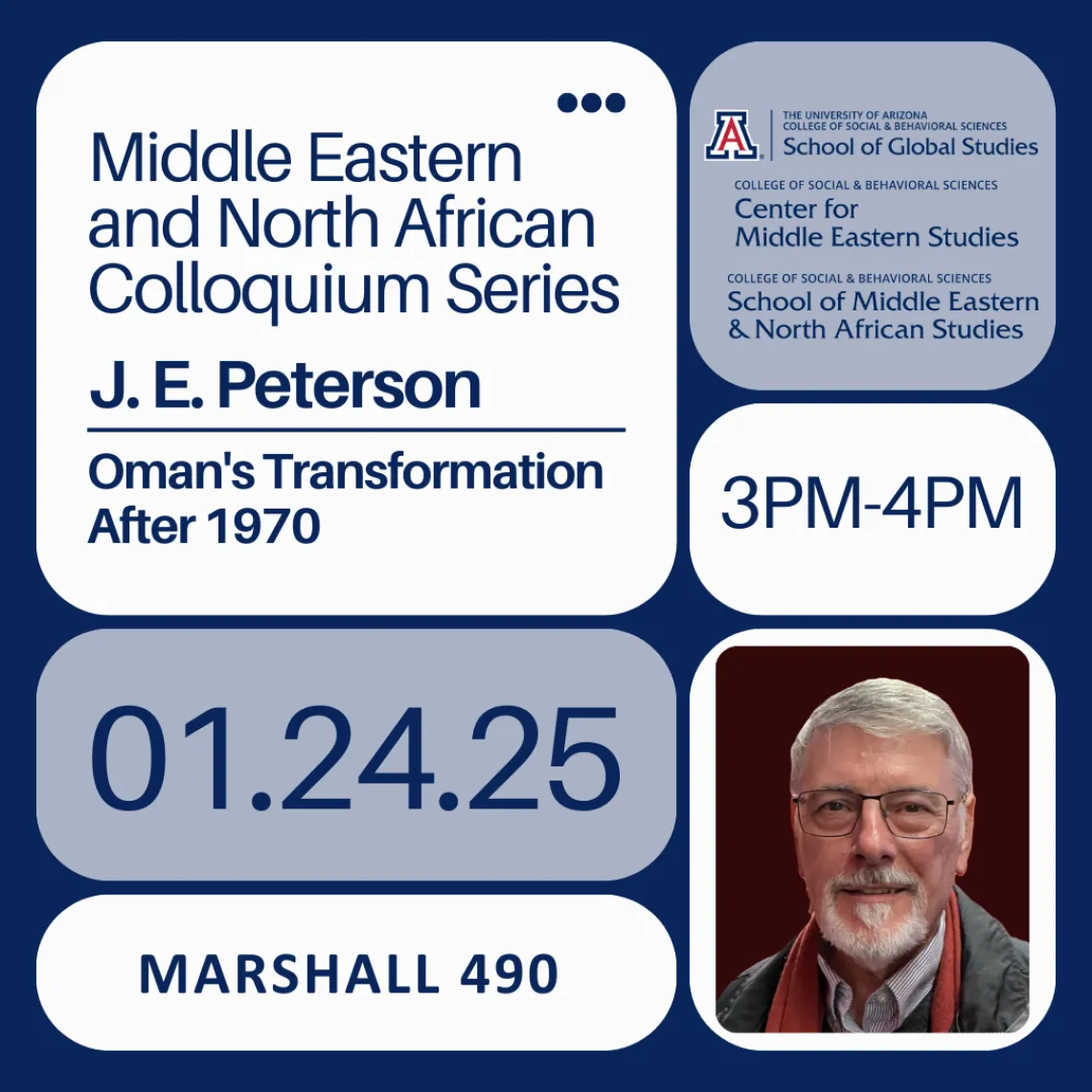Oman's Transformation After 1970

When
Where
Middle Eastern and North African Colloquium Series
Dr. J.E. Peterson has held research and teaching appointments at the Library of Congress, Bowdoin College, the College of William & Mary, the University of Pennsylvania, Durham University, the International Institute for Strategic Studies, SciencesPo, and served as the Historian of the Sultan's Armed Forces in the Sultanate of Oman. He has published more than a dozen books on Yemen, Saudi Arabia, Gulf history, Gulf security, political participation in the Gulf, and among them five books on Oman.
The book, Oman’s Transformation After 1970, is the culmination of a half century of professional and personal association with Oman. Oman’s 1970 coup launched a new political and economic structure that was created by and for Sultan Qaboos bin Said. The book seeks to show how the haphazard cobbling together of an unprecedented political system, an entirely new government administration, and an uncharted economic transformation produced the basis for the 50-year governance of Sultan Qaboos’s reign and beyond. The Qaboosid structure has endured into the reign of Sultan Haitham bin Tariq and quite likely will remain virtually intact well into the future. Oman’s Transformation focuses on the early construction of the Qaboosid state in the 1970s and 1980s, emphasizing the interplay between personalities and the process of institutionalization, and continues the narrative to the present demonstrating the resilience of the Qaboosid system. Oman shares many characteristics with the states of the Gulf Cooperation Council but it is also imperative to be aware of the many substantive differences with its neighbors.

